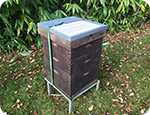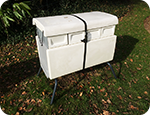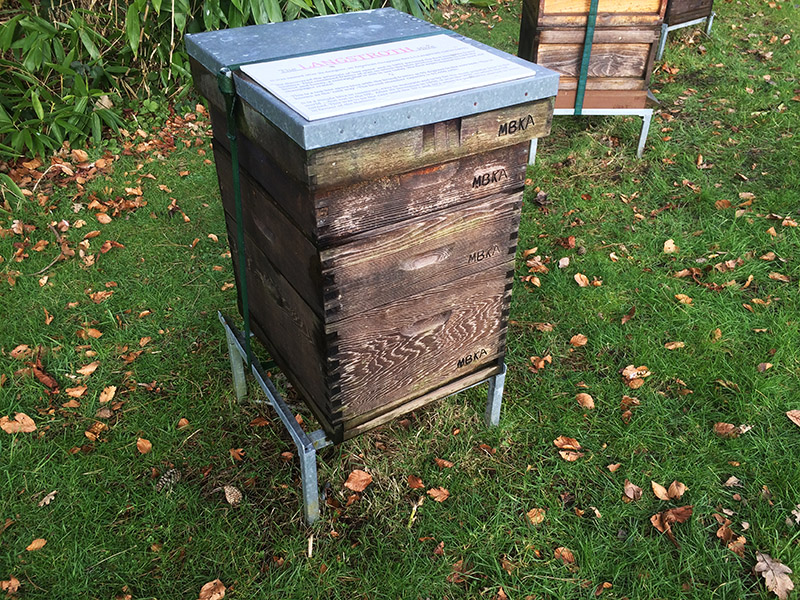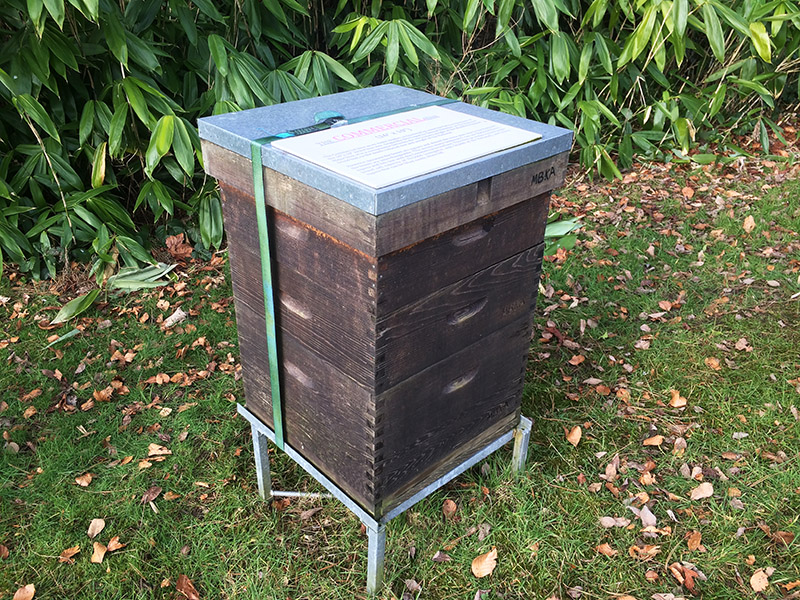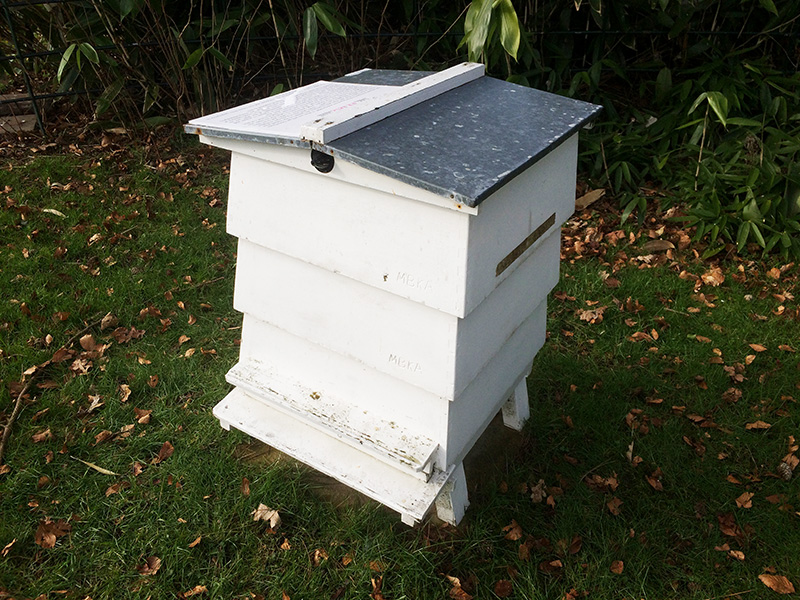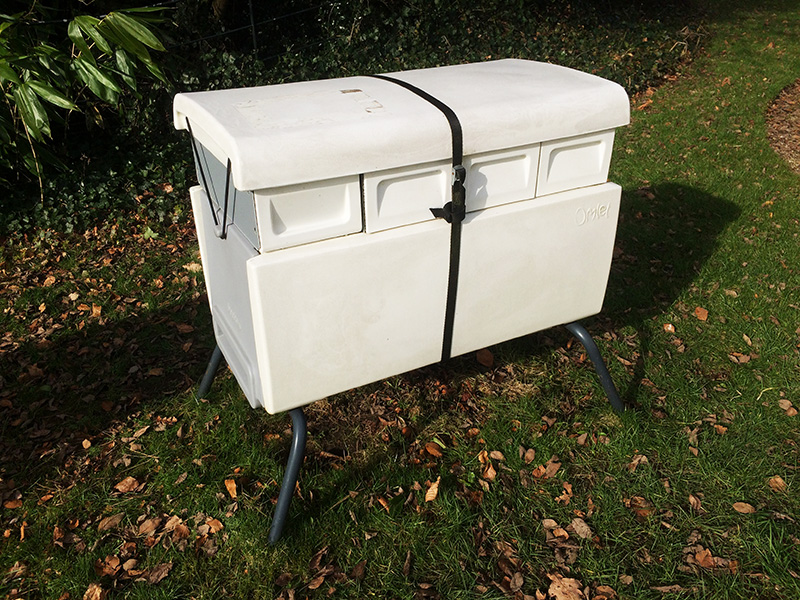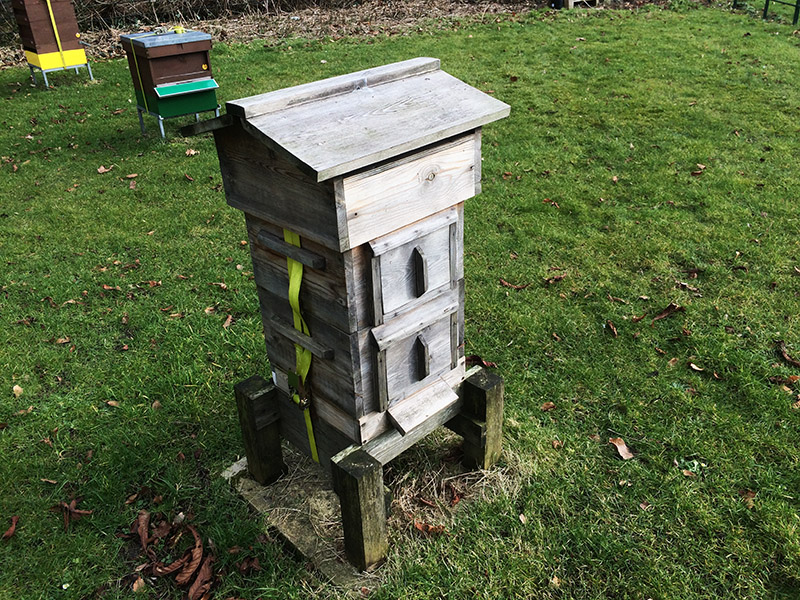Hive Information
From 1814 to the latest in 2009
In 1814, Petro Prokopovych, the founder of commercial beekeeping in the Ukraine, invented one of the very first beehive frames. However, for easy operations in beehives the spaces between elements need to be correct. The correct distance between combs was described in 1845 by Jan Dzierzon as 1½ inches from the centre of one top bar to the centre of the next one. In 1848 Dzierzon introduced grooves into the hive’s side walls replacing the strips of wood for moving top bars. The grooves were 8 x 8 mm (0.31 x 0.31 in), the spacing later termed bee space. The Langstroth hive was the first successful top-opened hive with movable frames. Langstroth hive was however direct descendant of Dzierzon’s hive designs.
There are two basic types of modern or movable hive in common use, the “Langstroth hive” (including all the size variants) which has enclosed frames to hold the comb and the “top-bar hive”, as the name implies, have only a top-bar to support the comb. These hives are typified by removable frames which allow the apiarist to inspect for diseases and parasites. Movable frames also allow a beekeeper to more easily split the hive to make new colonies.
The National hive is the most widely used hive in the United Kingdom. It is a square hive, with rebates (grooves) that serve as hand grips. The frames are smaller than standard Langstroth and Commercial hives and have longer hand grips (or “lugs”). Many beekeepers now view the brood box of the National as too small for the laying activity of modern strains of queen bee, so many beekeepers operate the National with a brood box and one super. This is sometimes called “a brood and a half”. While this provides enough room for the brood, it also increases the number of frames that have to be checked through regular inspection. Because of this the National hive brood boxes are also now available in a 14 x 12 inch size which gives a brood size similar to the Commercial or Langstroth.
Named for their inventor, Rev. Lorenzo Langstroth, Langstroth hives are not the only hives of this style, but they are the most common. Langstroth patented his design in 1860 originally being designed for comb honey production; it has become the standard style hive for 75% of the world’s beekeepers. This class of hives includes other styles, which differ mainly in the size and number of frames used. These include Smith, Segeberger Beute (German), Frankenbeute (German), Normalmass (German), Langstroth hive, Modified Commercial and Modified Dadant, plus regional variations such as the British Modified National Hive.
Langstroth hives make use of bee space so that frames are neither glued together nor filled with burr comb–comb joining adjacent frames.
Langstroth hives use standardized sizes of hive bodies (rectangular boxes without tops or bottoms placed one on top of another) and internal frames to ensure that parts are interchangeable and that the frames will remain relatively easy to remove, inspect, and replace without killing the bees. Langstroth hive bodies are rectangular in shape and can be made from a variety of materials that can be stacked to expand the usable space for the bees. Inside the boxes, frames are hung in parallel. The minimum size of the hive is dependent on outside air temperature and potential food sources in the winter months. The colder the winter, the larger the hive and food stores need to be. In the regions with severe winter weather, a basketball-shaped cluster of bees typically survives in a “double-deep” box. In temperate and equatorial regions, a winter cluster will survive in a single box or in a nuc (short for nucleus colony).
Langstroth frames are thin rectangular structures made of wood or plastic and which have a wax or plastic foundation on which the bees draw out the comb. The frames hold the beeswax honeycomb formed by the bees. Ten frames side-to-side will fill the hive body and leave the right amount of bee space between each frame and between the end frames and the hive body.
Langstroth frames are often reinforced with wire, making it possible to extract honey in centrifuges to spin the honey out of the comb. As a result, the empty frames and comb can be returned to the beehive for use in the next season. Since it is estimated that bees require as much food to make one kilogram of beeswax as they do to make eight kilograms of honey, the ability to reuse comb can significantly increase honey production.The modern Langstroth hive consists of the following parts:
- Hive Stand: the upper hive components rests on this providing a landing board for the bees and helping to protect the Bottom Board from rot and cold transfer.
- Bottom Board: this has an entrance for the bees to get into the hive.
- Brood Box: is the most bottom box of the hive and is where the queen bee lays her eggs.
- Honey Super: usually shorter than the brood box, but is upper-most box(s) where honey is stored.
- Frames & Foundation: wooden or plastic frames with wax or plastic sheets with honey comb impression where bees build wax honey combs.
- Inner Cover: provides separation from a overly hot or cold Outer Cover and can be used as a shelf for feeding or other purposes.
- Outer Cover: provides weather protection for the hive.
Commercial hives are exactly the same external dimensions as a National hive, but instead of having a rebate the hive is a simple cuboid. Because of this the frames are larger and have shorter handles or lugs. The brood box is picked up using small hand holds cut into the external wall of the hive. Supers have this same feature, which can make them difficult to hold when full of honey. Some beekeepers therefore use National supers on top of a Commercial brood box.
The WBC, invented by and named after William Broughton Carr, is a double-walled hive with an external housing that splays out towards the bottom of each frame covering a standard box shape hive inside. The WBC is in many respects the ‘classic’ hive as represented in pictures and paintings, but despite the extra level of insulation for the bees offered by its double-walled design many beekeepers avoid it due to the inconvenience of having to remove the external layer before the hive can be examined.
Dartington Long Deep Hive
The Dartington Long Deep (DLD) hive takes 14 x 12 inch and can take up to 17 frames. It is possible to have 2 colonies in the brood box as there is an entrance at either end. It has half size honey supers which take 6 frames can be used which are lighter than full supers and are therefore easier to lift. The Dartington originally developed by Robin Dartington so that he could keep bees on his London rooftop.
The Beehaus is the most modern beehive having been launched in 2009. It is based on similar principles to a Dartington.
The top-bar or Kenya-hives were developed as a lower-cost alternative to the standard Langstroth hives and equipment. They are used by some devotees in the United States, but are much more popular, due to their simplicity and low cost, in developing countries. Top-bar hives also have movable frames and make use of the concept of bee space.
The top-bar hive is so named because the frames of the hive have only a top bar, not sides or a bottom bar. The beekeeper does not provide a foundation (or provides only a fractional foundation) for the bees to build from. The bees build the comb so it hangs down from the top bar. The hive body is often shaped as an inverted trapezoid in order to reduce the tendency of bees to attach the comb to the hive-body walls. Unlike the Langstroth design, a top-bar hive is generally expanded horizontally, not vertically. The top-bar design is a single, much longer box, with all the frames hanging in parallel.
Unlike the Langstroth hive, the honey cannot be extracted by centrifuging because a top-bar frame does not have reinforced foundation or a full frame. Because the bees have to rebuild the comb after each harvest, a top-bar hive yields more beeswax but less honey.
However, like the Langstroth hive, the bees can be induced to store the honey separately from the areas where they are raising the brood. Therefore, bees are less likely to be killed when harvesting from a top-bar hive than when harvesting from a skep or other traditional hive design.
The Warré hive was invented by Abbé Émil Warré, and is also called “ruche populaire” (fr) or “The People’s Hive” (en), the Warré hive is a modular and storied design similar to a Langstroth hive. The hive body is made of boxes stacked vertically, however it uses Top Bars for comb support instead of full frames. Popularity of this hive is growing among sustainable practice beekeepers. The Warre hive differs from other stacked hive systems in one fundamental aspect: when the bees need more space as the colony expands, the new box is “nadired”. i.e. positioned underneath the existing box(es). This serves the purpose of warmth retention within the brood nest of the hive, considered vital to colony health.



